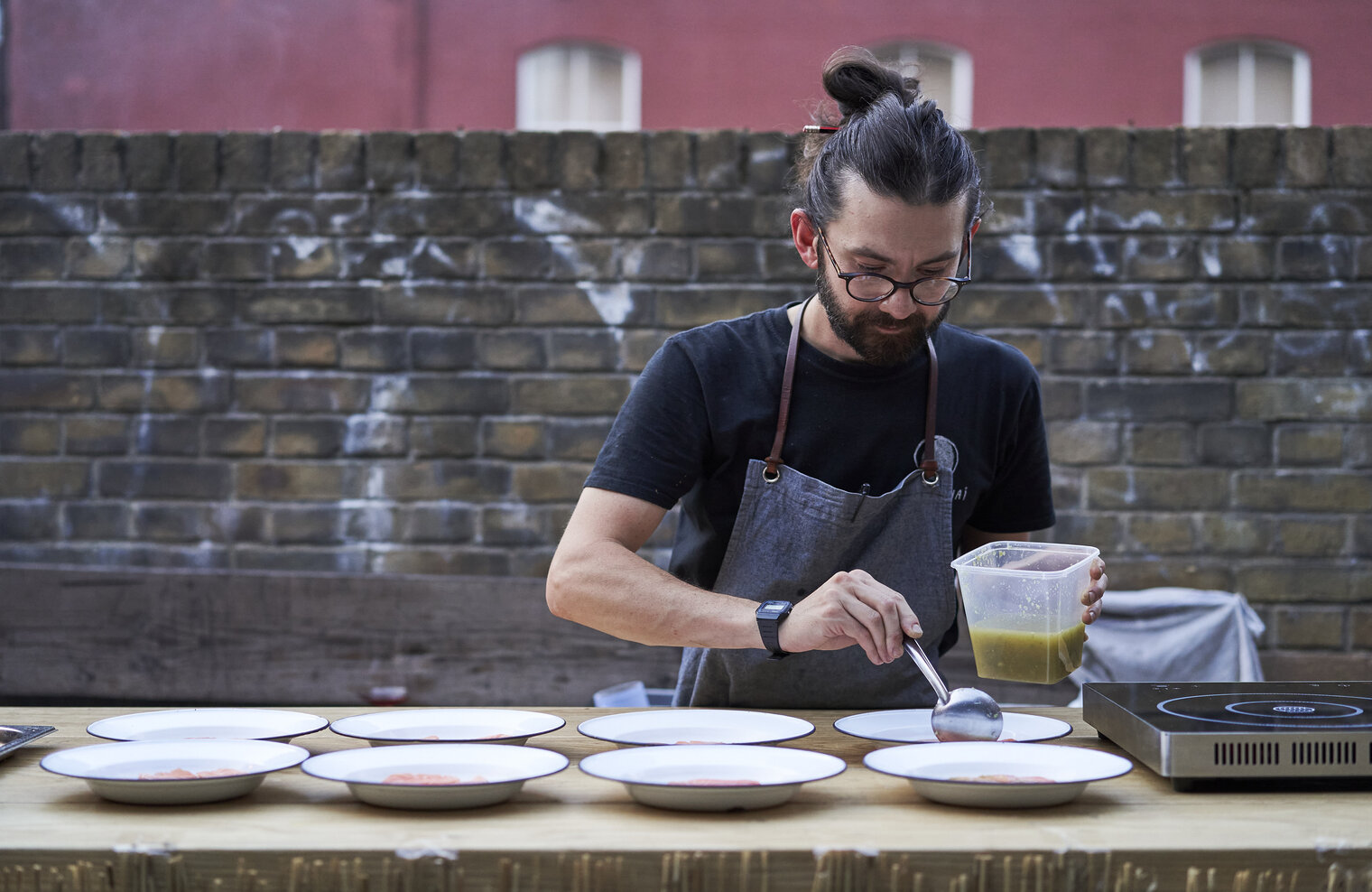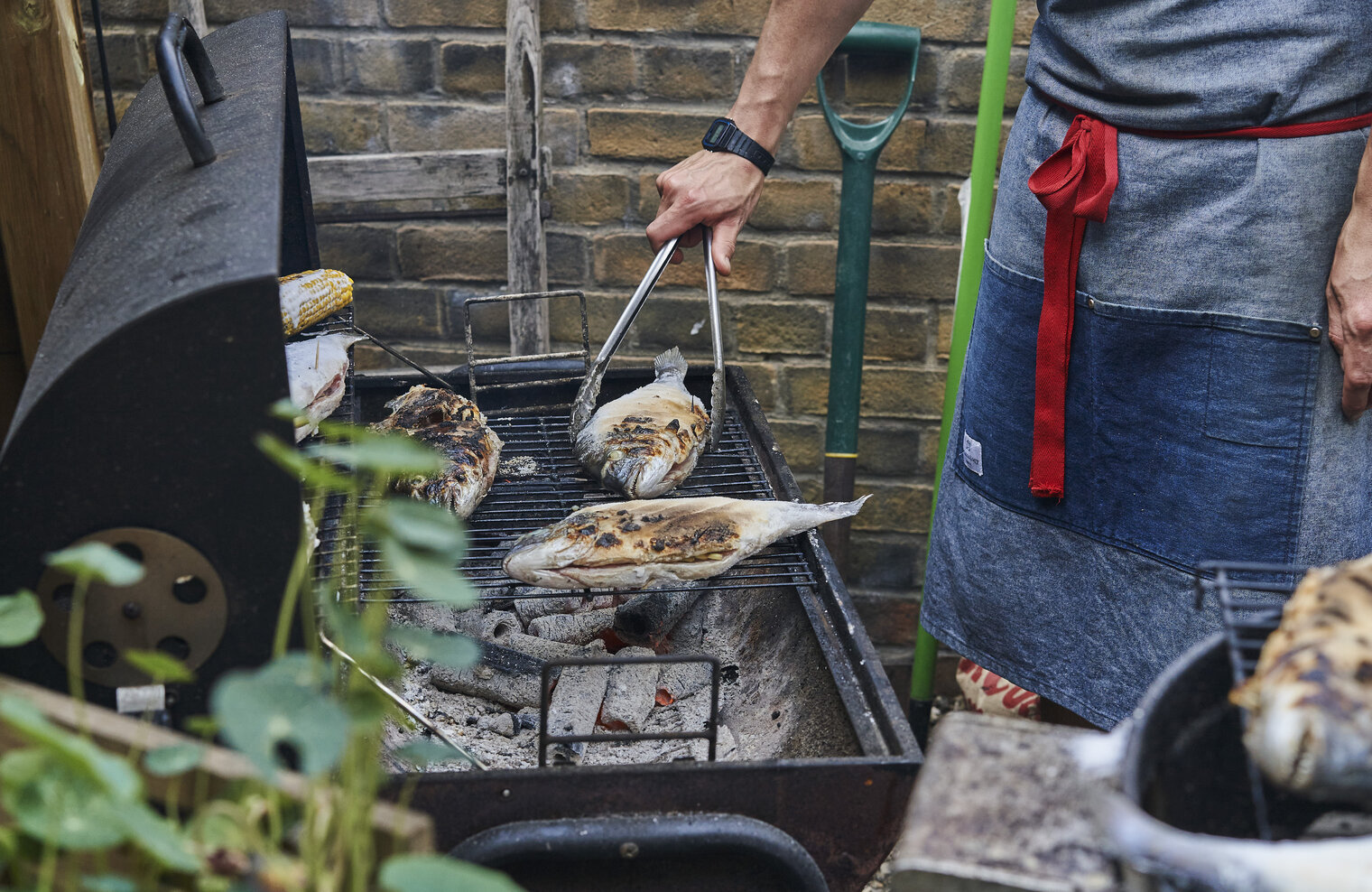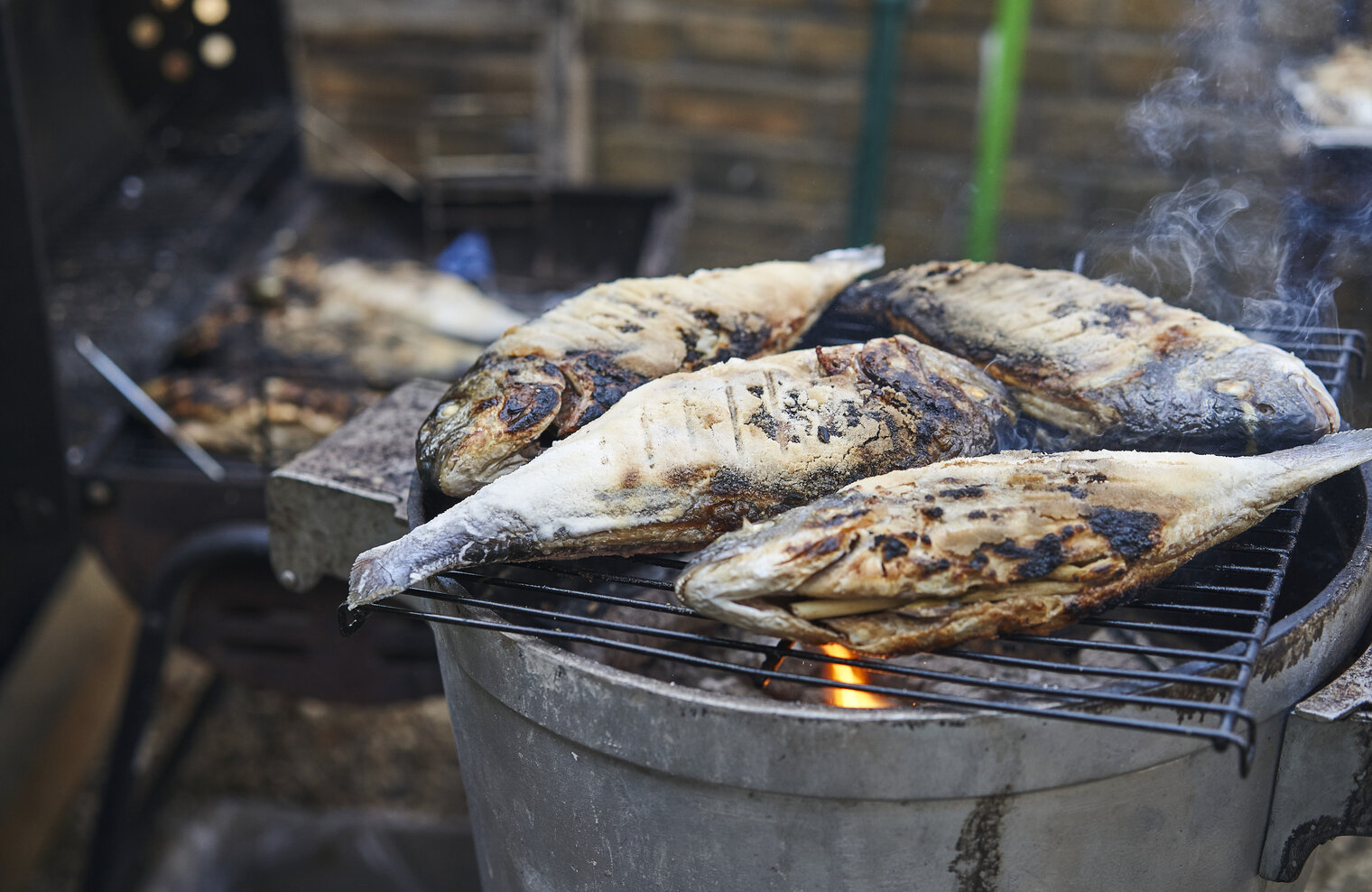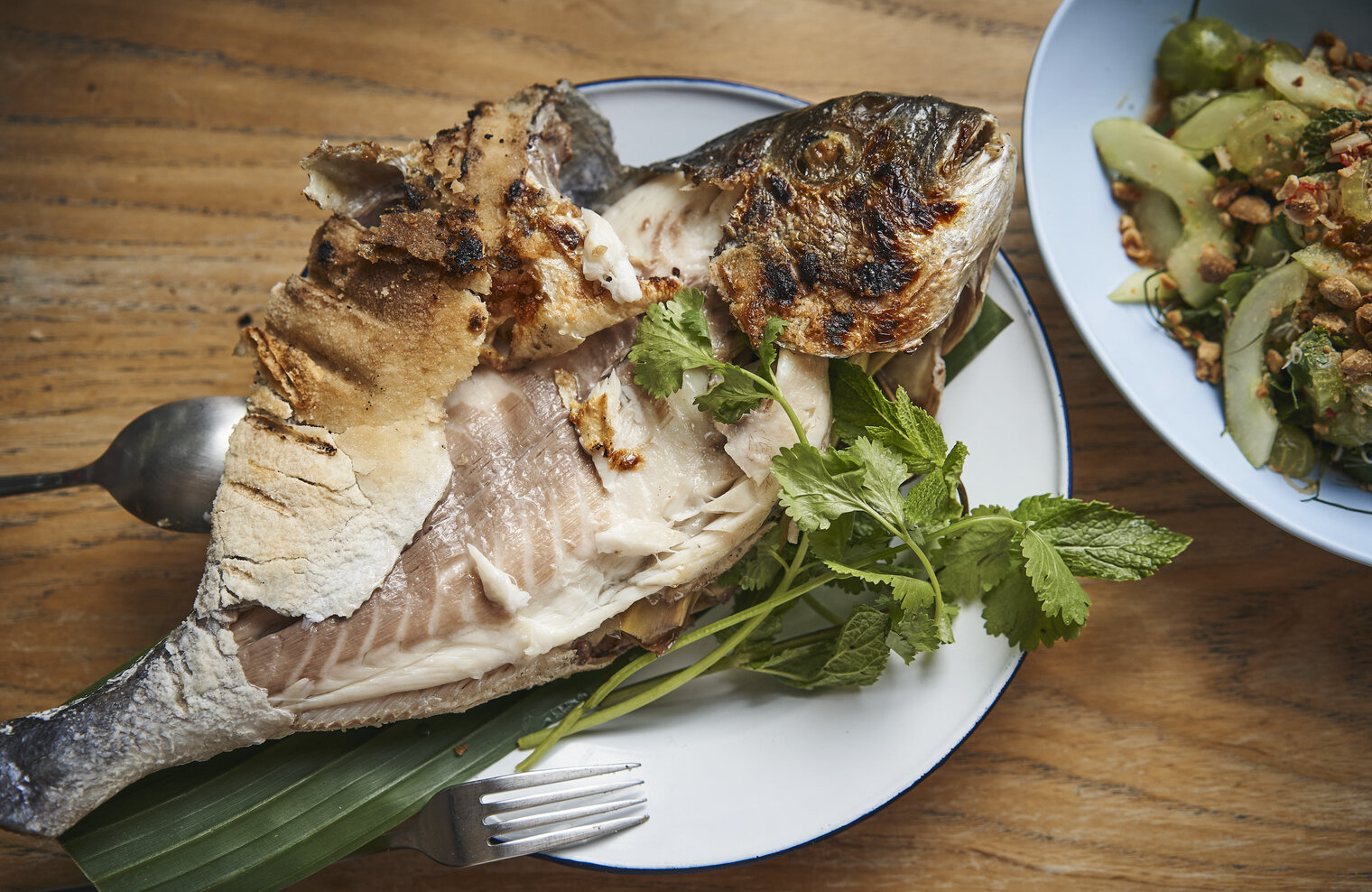John Chantarasak: AngloThai
“Cooking over fire is a very popular technique in Thailand, mainly due to limited wealth and many families living in small villages with little or no access to domestic kitchens.”
Can you explain the concept of AngloThai for people who don’t know your food already?
AngloThai has become somewhat of an ethos I cook by – the concept draws influence and inspiration from both sides of my family heritage; my father is originally from Bangkok and my mother Cornwall.
Essentially I cook recipes I know from Thailand, be that dishes I’ve tried or old family recipes my grandma used to make for us as kids, but use as much domestic, seasonal produce from the British Isles to create the dishes. For example, lime juice is used as a souring agent in Thailand. There are plenty of domestic sour ingredients in the British larger that I use to replicate this flavour profile – sea buckthorn, gooseberries and rhubarb are all prime examples.
Can you tell us a bit about ‘Thai barbecue’? We understand that’s a huge question!
Cooking over fire is a very popular technique in Thailand, mainly due to limited wealth and many families living in small villages with little or no access to domestic kitchens like we are used to in the Western world. I wouldn’t really class over fire cooking in Thailand as ‘barbecue’ like we associate the word. It’s more that live fire is the main source of cooking heat so it could be as simple as boiling a pot over the coals to steam rice or as complex as grilling all of your ingredients to then produce a final dish like a grilled chilli relish to dip balls of sticky rice, vegetables and herbs into.
Fire is used in so many interesting and diverse ways to cook in Thailand, whether it’s directly on hot coals, over the coals on a grill or just suspended over the flame. Thai people are very versatile and adaptable so it’s too broad to speak on the topic without writing a chapter of information.
Does Thai barbecue vary by region?
Each main region of Thailand has a different style of food but I wouldn’t say the barbecue or physical cooking set-up varies much. Southern Thailand is plentiful in seafood so along the coast you will see many cooks grilling freshly caught seafood over coals and serving this with spicy dipping sauces.
Northeastern Thailand or Isaan is rich in pungent flavours like fermented fish sauce (pla raa) and here the food is more rustic and robust so you may see foraged animals like toads or jungle animals over the charcoals.
Northern Thailand is the land of pork, they love anything pork there so you’ll find any cut of pig on the barbecue, usually served with punchy roasted chilli ‘jaew’ dipping sauce. It’s here they make the famous ‘sai ua’ sausage laced with curry paste and herbs before being smoked and grilled over coconut.
Central Thailand is the richest area and that alone means fewer people cook over fire as there is more access to gas. That being said the famous dish of ‘goong woon sen’ is still cooked over coals in the more traditional restaurants. It’s a wonderful dish of jumbo prawns and glass noodles baked in clay pots over charcoal taos (traditional Thai charcoal cooker) that is incredibly popular in Bangkok.
What difference does live fire make to your cooking?
It’s the flavour you impart into the food via the charcoal and wood. I’ve always been a fan of adding a slight bitterness into the food from slightly charring and catching the items you’re grilling, I feel it adds a level of complexity and depth to the final dish and in Thailand, the flavour profile of bitter is really prized when used in balance with other flavours.
I feel much more connected to the food I’m cooking when it’s over live fire and I’m a big fan of the versatility you can get by adding a lick of smoke or dropping something directly into the coals. It’s a super fun way to cook and a skill I think all cooks should try and learn more about.
Which charcoal/wood do you use?
We buy from Mark Parr at London Log Co. and tend to buy a combination of holm oak lump wood charcoal, ogatan majik briquettes and beech wood. But I would say try a range of different woods and charcoal before deciding what works for you.
If you could recommend a Thai dish or technique for people to have a go with at home on the barbecue, what would it be?
Pla pao (pictured) is one of my favourites – seems difficult but it’s pretty easy. Essentially just take a whole fish like bream or sea bass, stuff it with lemongrass in the gutted cavity and then cover it in a thick layer of salt before cooking over the charcoal.
Once the salt hits the heat it will become firm and will create a thick crust stuck to the fish. This will allow the fish to grill and steam simultaneously while seasoning the flesh through the fish. Once cooked the skin will easily peel back (you can’t eat the skin unless you truly love the taste of salt) and then push the flesh off the fish bones. Simples.
Photos: Ben Broomfield.



